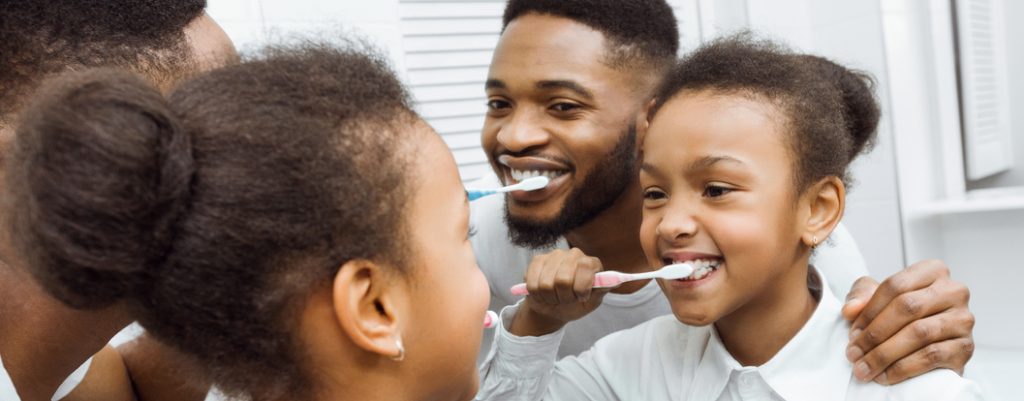That missing tooth gap might look silly and cute in photos, but it won’t last forever, and that’s a good thing! After your child has lost a baby tooth, stashed it under the pillow, and experienced a visit from the Tooth Fairy, their next question might be “where’s my new tooth?” You might find him or her open-mouthed and facing a mirror, examining the empty gums, poking at the gap. Getting forever teeth is exciting, so it’s no surprise that kids get impatient. But as you wait with your child to see that white thing poke through the gums, it’s a good idea to help him or her understand what it means to have forever teeth.
The Waiting Game
When you see your child strike that gaping, open-mouthed stare, so close that the mirror gets foggy, talk about the fact that brand new forever tooth will crest the gum line in anywhere between a week and six months. This tooth will steadily descend until it’s fully in place. Since loose baby teeth are caused by forever teeth pushing them out, you can expect the permanent teeth to appear in the order that their corresponding baby teeth popped free. As your child waits patiently, encourage the regular brushing and flossing routine, as this is crucial to the health of both gums and new teeth.
What’s the Difference?
This biggest difference between baby teeth and their permanent counterparts is that forever teeth last, well, forever! But there are several more subtle differences you’ll notice:
- To accommodate a growing mouth and body, your child’s forever teeth will be larger. The first few that come in might look comically large, too big for a child’s mouth. But don’t worry, they’ll grow into them.
- Look closely and you’ll also notice a color difference. Forever teeth are not quite as pearly white as baby teeth, so don’t be alarmed if they come in looking slightly less vibrant – this isn’t an indication of tooth health or decay.
- Because they’re permanent, forever teeth have to be stronger and more durable, so their enamel is quite a bit harder. However, this doesn’t mean that dental hygiene is less important for permanent teeth. On the contrary, these chompers need to last a lifetime, so encourage your child to continue healthy tooth habits.
- There are more of them! Kids have a total of 20 baby teeth, but a full mouth of forever teeth amount to 32. Let’s break that down: it includes eight incisors, four canines (cuspids), eight premolars, and 12 molars. While that seems like a lot, they emerge gradually, with the final molars (the wisdom teeth) often appearing in the late teens.
Healthy Habits for a Lifetime
Brushing, flossing, and rinsing as part of a daily routine is incredibly important for both baby teeth and forever teeth. Baby teeth are softer and more fragile, allowing cavities to spread quickly, so keeping them clean is vital. And forever teeth need to last a long time, which requires routine maintenance. Establishing a dental routine for baby teeth will prepare your child to keep it going once their forever teeth emerge. Toothbrushes featuring Disney princesses or Marvel superheroes or fun animal-themed flossers can make teeth time exciting and help establish healthy habits.
It’s also important to discourage habits like thumb sucking. When forever teeth are emerging, a child’s gums and jaw are still forming, and thumb sucking can alter their alignments, causing conditions like overbite, incorrect teeth spacing, and more.
And let’s not forget the dentist! Both kids and adults should visit the dentist for regular cleanings and checkups every six months. This is especially important for children who are in the process of losing baby teeth and gaining permanent ones, to ensure that those forever teeth are coming in straight and true.
As you and your child navigate the baby teeth to forever teeth journey, keep these facts in mind, and keep up with great information like this by following Flutterpop on Facebook, Twitter, and Instagram.





